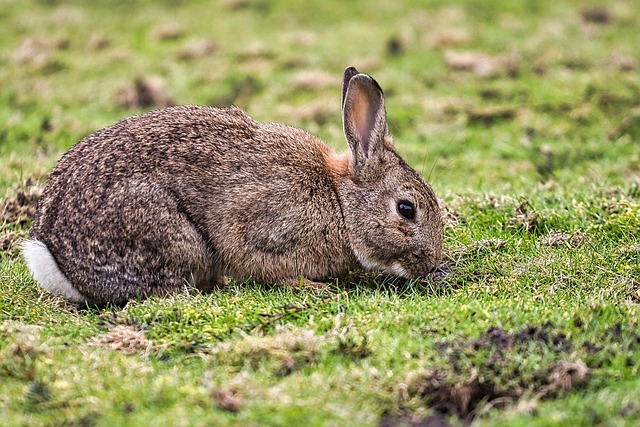Habitats of Cottontail Rabbits: Where They Choose to Live

Cottontail rabbits, with their distinctive fluffy tails and swift movements, are fascinating creatures that inhabit a variety of environments. Understanding their preferred habitats sheds light on their behavior and survival strategies. From woodlands to grasslands, wetlands, and even urban settings, cottontail rabbits exhibit remarkable adaptability. This article explores the diverse habitats these rabbits choose to live in, delving into the factors that influence their habitat selection and the importance of conserving these environments for their well-being.

Overview of Cottontail Rabbits
- Introduction to Cottontail Rabbits
Cottontail rabbits are adorable little creatures known for their fluffy white tails and twitchy noses. These small mammals are found in various habitats across North and South America, with different species and varieties displaying unique characteristics.
- Species and Varieties
There are several species and varieties of cottontail rabbits, each adapted to different environments. From the Eastern cottontail to the Desert cottontail, these furry critters have evolved to thrive in diverse ecosystems.
Characteristics of Preferred Habitats
- Food Sources and Foraging Behavior
Cottontail rabbits are herbivores with a voracious appetite for vegetation. They prefer habitats with abundant food sources, including grasses, clover, and wildflowers. Their foraging behavior involves nibbling on plants close to the ground, making them important players in the ecosystem’s food chain.
- Shelter and Nesting Preferences
When it comes to shelter, cottontail rabbits seek out areas with dense vegetation for protection from predators. They create shallow nests called forms in grassy areas or under bushes to rest and raise their young, blending seamlessly into their surroundings.
Wetland Habitats
When it comes to wetland habitats, cottontail rabbits don’t mind getting their feet a bit damp. Marshes and wetlands provide these furry creatures with abundant food sources and cozy hiding spots. Plus, the water helps keep them cool during those hot summer days.
Challenges and Benefits of Wetland Habitats
However, living in wetlands isn’t all rainbows and sunshine for cottontail rabbits. They have to be wary of predators like snakes and birds of prey that also call these areas home. On the bright side, wetland habitats offer a buffet of aquatic plants and insects for cottontails to feast on.
Urban Habitats
Cottontail rabbits have proven themselves to be quite the city slickers when it comes to urban habitats. They’ve adapted surprisingly well to living among humans, finding shelter under porches and munching on garden greens.
Adaptation to Urban Environments
In urban settings, cottontail rabbits have learned to navigate busy streets and dodge curious pets. They’ve even mastered the art of raiding backyard vegetable patches without getting caught.
Factors Influencing Habitat Selection
When it comes to choosing where to hang their cottontail hats, these rabbits take several factors into consideration. Climate and geographic location play a big role, as cottontails prefer areas with mild temperatures and plenty of vegetation.
Competition and Predation
Additionally, cottontail rabbits weigh the risks of competition and predation when selecting their habitats. They’ll opt for areas with fewer predators and less competition for food and shelter, ensuring their survival.
Conservation of Cottontail Rabbit Habitats
As urbanization and habitat destruction continue to threaten cottontail rabbit populations, conservation efforts are more crucial than ever.
Threats to Habitat Loss
Habitat loss due to human development poses a significant threat to cottontail rabbits. As their natural habitats disappear, these rabbits are forced to adapt to new environments or face dwindling populations.
Conservation Strategies and Initiatives
Fortunately, conservationists are working hard to protect cottontail rabbit habitats through initiatives such as habitat restoration and creation of wildlife corridors. By preserving their natural homes, we can ensure these adorable rabbits continue to thrive for generations to come.In conclusion, the habitats of cottontail rabbits play a crucial role in their survival and overall well-being. By recognizing and preserving these diverse environments, we can ensure the continued existence of these charming creatures for generations to come. It is through our collective efforts in conservation and awareness that we can protect the homes of cottontail rabbits and other wildlife, fostering a harmonious balance between nature and human development.
FAQs
1. What types of habitats do cottontail rabbits prefer?
2. How do cottontail rabbits adapt to urban environments?
3. Why is conserving cottontail rabbit habitats important for biodiversity?
4. What are the main factors that influence a cottontail rabbit’s choice of habitat?
Must Read : Tricks for Successfully Catching Coyotes with Live Traps
Pingback: Some Cute Pictures of Baby Cottontail Rabbits - Habitat Mentor